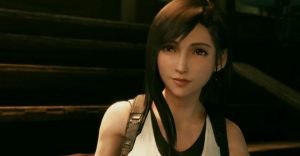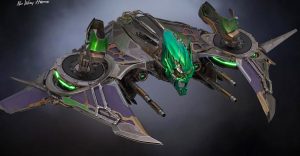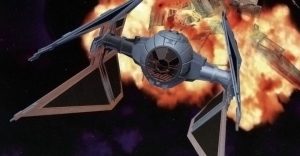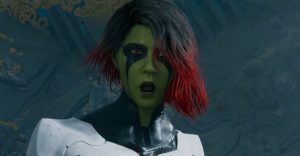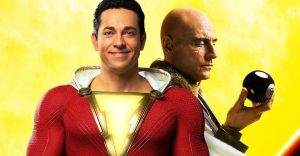15 Lord Of The Rings Concept Art Designs Way Better Than What We Got

Peter Jackson’s Lord of the Rings unleashed what was to become the millenial Tolkien phenomenon. Kids who’d only ever read The Hobbit rushed to pick up the first book from the trilogy in the hopes of becoming experts in the field of Middle-earth. Teenagers even attempted to learn Elvish, a language that had no use in the real world whatsoever. However, that didn’t matter. It was important to know Tolkien’s world inside-out.
Even the ever daunting The Silmarillion became a fan favourite book because loyal members of the Tolkien fan club were eager to find out the origins of a world that has so much history that it’s hard to remember it isn’t real.
Although Peter Jackson’s adaptation left out some rather important moments and characters from the book (such as Tom Bombadil), it remains one of the best fantasy book movie adaptations to ever grace our screens.
The film is overflowing with scenic bliss. The stunning New Zealand landscapes are nothing short of breathtaking and you will have noticed that many scenes pay homage to the beautiful illustrations of John Howe, Alan Lee, and Ted Nasmith.
Sadly, the latter was not able to become one of the film’s conceptual artists, along with Howe and Lee, but it’s highly evident that his work played a part in the movie’s artistic vision.
Even now, the love for this fantasy trilogy persists as artists everywhere continue to create their own version of Middle-earth and all the fantastical creatures that reside there.
For this reason, it’s time to take a quick trip to Middle-earth with our 15 Lord Of The Rings Concept Art Designs Way Better Than What We Got.
15 Cirith Ungol by John Howe

It’s amazing that Samwise is able to rescue Frodo from the Tower of Cirith Ungol with such ease, especially considering that he is a mere halfling. However, due to the orcs’ extremely low IQ and the fact that they easily become upset, Samwise is successful on his quest to save his best friend.
The Tower of Cirith Ungol is part of an outpost that must protect Mordor from intruders attempting to gain access via the pass. It is also known as Cirith Ungol, which means “Spider’s Cleft.”
In John Howe’s version, Cirith Ungol looks as though it was built in tangent with the mountains, whereas in Jackson’s version, the tower is formed of great blocks of stone that stand out from the rest of the landscape. Perhaps John Howe wanted to keep in mind the fact that it was initially built by men of Gondor.
14 Eowyn and the Witch King by Alan Lee

For many The Lord of the Rings fans, The Return of the King is by far the best book of the trilogy. In this book, Eowyn and Pippin rise to the occasion and, together, defeat the foreboding Witch King, also known as the Leader of the Nazgul.
Alan Lee’s drawing of this moment displays Eowyn with loose locks, while in the film, these are kept hidden under her helmet. Eowyn eventually takes the helmet off but not until the moment before she puts her sword through the Witch King’s head.
John Howe’s portrayal of this scene is far more gripping, as it sees Eowyn remove her helmet prior to decapitating the Witch King’s fellbeast, as is stated in the book. Consequently, in this picture, Eowyn wears her hair down, making this scene far more visually symbolic.
13 Frodo and the Nazgul by John Howe

This one’s a bit of a cheat because the reason this concept design didn’t make it into the cut is solely down to the time constraints placed on the team by Miramax, the film’s original production company. Had they stayed with Miramax, the film would have been split into two movies only.
Sadly, we’ll never get to see what was supposed to be the climactic ending to The Fellowship of the Ring. In this image, the Lord of the Nazgul comes for Frodo on top of Amon Hen, where Boromir earlier died.
As you can see from the image, this would have made a dramatic ending to the first film. Instead, in the movie we get a tear-jerking dialogue between our favorite besties, Frodo and Samwise.
12 The Balrog by Alan Lee

It’s almost impossible to say which Gandalf quote is more famous: “Run fools!” or “You shall not pass!” However, few fans have noticed how angry Aragorn looks when Gandalf yells at him, “Do as I say, swords are of no use here!” Well, we did and it’s hilarious. We recommend that you go watch the scene immediately, since you’ll be in for a real treat.
While the film’s Balrog is far from shoddy and owns many similarities to Alan Lee’s concept design, as well as his original illustrations from the book itself, this drawing has a bestial quality that is somewhat lacking in the CGI version.
We don’t blame Peter Jackson for this– the guy is good at what he does, but most can accept that Alan Lee’s drawing is far more terrifying.
11 The Warg by John Howe

The Lord of The Rings film adaptation has come under much scrutiny when it comes to some of its special effects. The same can be said about the film’s recreation of those terrifying wolf-like beasts known as wargs.
If you’ve never encountered a warg before, we must tell you that these are the orcs’ saliva-spitting cavalry. In Tolkien’s books, they are described as clever and organized– qualities that are poorly highlighted in the film.
While the wargs in The Two Towers flick aren’t terrible, they look more like chubby deranged dogs than the vicious breed of wolves that they are, which is why Howe’s illustration comes out on top.
Of course, overall Peter Jackson’s resurrection of Middle-earth is a magnificent artistic masterpiece.
10 Lothlorien by Alan Lee

Alan Lee clearly has a huge talent for Elven architecture, which is proven by this pencilled interpretation of Lothlorien, the magical home of the Elves that lies within the mallorn trees of a forest with the same name. The intricate structure shown in Lee’s sketch is almost camouflaged by the giant branches, making it look remarkably like a tree-house.
Similarly, in Jackson’s adaptation, Lothlorien is a dark yet glowing realm that receives protection from the surrounding trees. There’s no denying how stunning Galadriel’s crib is within the film.
Nevertheless, some of the scenery within Lothlorien does look a bit like it was taken from a high budget theatre production. Its pristineness doesn’t quite capture the more chaotic beauty of Alan Lee’s art work.
9 Shelob’s Lair by John Howe

Although Shelob the Spider appears in The Two Towers book, Jackson moved her to the third film so as to change the order of the narrative used in Tolkien’s work.
In the book, Frodo and Sam enter the lair together unlike the filmic adaptation, which sees the best friends fall out beforehand, something that is instigated by Gollum’s overwhelming desire to sabotage the quest.
In the original version, an unnerving stench pervades their little hobbit noses– a stench that comes from a gaping hole amongst the mountains. This hole is the entrance to Shelob’s lair.
The angle of Howe’s drawing conveys the ominousness surrounding the dark and stench-ridden hole. Overall, this is a scene that just isn’t as prominent or sinister within the movie.
8 Zirakzigil by John Howe

If you’re loyal to the books, then you will definitely prefer John Howe’s concept design of the battle between Gandalf and the Balrog atop Zirakzigil, one of the Misty Mountains’ tallest peaks, under which lies the doomed dwarf kingdom referred to as Khazad-dum.
It is here that Gandalf kills the Balrog, though both of them eventually die in battle.
Although this moment is magnificently captured in the film, it doesn’t completely stay true to the book, which sees the fight take place with the sun shining down on them (as is recounted in Tolkien’s original tale) and not amidst a nasty blizzard.
When Gandalf appears again as Gandalf the White, it’s an understatement to say that this news was met with a huge smile from avid Tolkien fans everywhere.
7 The Endless Stair by John Howe

Minas Morgul is a menacing fortress run by the Witch King and Sauron’s orc minions. Ironically, Minas Morgul was originally founded to protect Gondor from Sauron, as it strategically lies between Gondor and Mordor. However, it was taken over by the dark lord during the Third Age.
The bird’s eye perspective of this concept sketch by John Howe enhances the sense of vertigo felt by the two hobbits as they climb the steep staircase that leads into Mordor, and Minas Morgul can be seen in the distance as though it belongs in a different dimension altogether.
It also feels as though the hobbits are in plain view of the orcs, which they might be. Unfortunately, this climb in the movie doesn’t quite have the same effect.
6 Barad-dur by John Howe

The lighting in this image captures both the beauty and horror of Mordor. There is also something vaguely retro about it, replicating fantasy films from the 1980s, such as Labyrinth or Dragonslayer.
Most of the Mordor scenes within the movies use either somber grey lighting or are filmed in dark hues. To be fair, Mordor is referred to as The Land of Darkness.
On the other hand, Howe’s sketch uses far more colour to enhance Mordor’s menacing characteristics. It seems that Howe wanted to project the empty vastness of Sauron’s land.
As Boromir correctly puts it, “It is a barren wasteland, riddled with fire, ash, and dust. The very air you breathe is a poisonous fume.”
5 Lady Dwarf by Alan Lee

In The Two Towers, as Eowyn and Aragorn lead the people of Rohan to Helm’s Deep for protection, Gimili tells Eowyn about lady dwarves, particularly the fact that they are usually mistaken for male dwarves due to their beards (accurately pointed out by a grinning Aragorn).
However, because lady dwarves don’t have any roles in the trilogy and only ever appear in the background of The Hobbit: An Unexpected Journey, they still remain a bit of a mystery to most fans.
This concept art by Alan Lee allows you to get a good idea of what a female dwarf should look like, even if the films don’t show them up close. Perhaps in the new TV series, they will delve into the dwarf women a little more. We certainly hope so.
4 The Paths of the Dead by John Howe

The Paths of the Dead is a haunted pass that lies within the White Mountains. Gimli, Aragorn, and Legolas travel there to ask its ghost-like dwellers to fight with them against Sauron. Aragorn, being heir to the Gondor throne and son of Isildur, promises to lift the curse that his father placed on them if they obey his request.
John Howe said he “imagined the scene in the Paths when their King says ‘The Dead come,’ that the camera would pull back to reveal the huge cavern with the Army of the Dead issuing forth and spiralling down the paths to the centre.”
Howe’s interpretation is a lot closer to what is described in the book and far more cinematic than the narrow shot of the army used in the movie.
3 Gimli and Legolas by John Howe

This drawing is not very different to the movie version of this scene. However, in the film, Legolas doesn’t wear a helmet and his armory is a lot simpler than that worn by the Silvan Elves of Lothlórien.
In Howe’s image, you can see that Legolas is given intricate and embellished armoury, perhaps to highlight the fact that he comes from royalty– he is a prince after all.
Meanwhile, in Jackson’s version, Legolas tends to stand out from the other elves but not because of his royal heritage. If anything, we see that Legolas rejects this part of his identity, though maybe it is in order to gain respect from his companions.
Perhaps the film’s less opulent version of Legolas is to reflect his rebellious nature.
2 Treebeard by Alan Lee

Treebeard is a walking, talking tree who befriends our second favourite besties, Pippin and Merry. At first glance, this Treebeard concept art design closely resembles the movie version.
However, if you look closely, Alan’s Lee design is far more intricate and creature-like– from the leafy branches springing out of his head to the slender trunk limbs. The final product looks more like a tree with eyes than a tree-like creature, though this might also depend on the viewer’s interpretation of an ent.
In the movie, Treebeard was brought to life with an animatronic model. Because of this, the Ent’s interaction with the two hobbits is all the more believable to fans. However, it is unfortunate that we didn’t get a more detailed version of Treebeard.
1 Elrond’s Quarters by Alan Lee

Elrond’s home was influenced by Art Nouveau, a popular form of art and architecture that is based on shapes taken from nature, hence the curves and winding patterns that can be seen in both versions of the Elven constructions.
What’s more, the trees tend to come in from outside, organically forming a part of the Elven-made structures, rather than hindering them.
If you look closely at Alan Lee’s drawing, Bilbo can be seen squatted over some parchment, evidently writing about his own adventures in There and Back Again.
The scene in which Bilbo shows Frodo his story was actually supposed to be set in the library (seen in Lee’s sketch), but due to it being such a short scene, they decided to set it on one of Elrond’s porches instead.
—
What do you think? Do you wish you’d seen any of this concept art in the Lord of the Rings movies? Let us know in the comments!
About The Author










